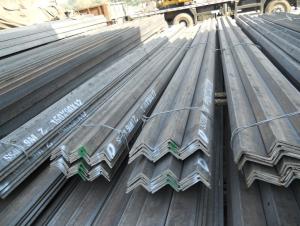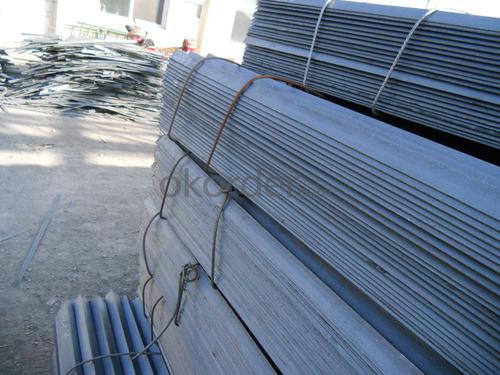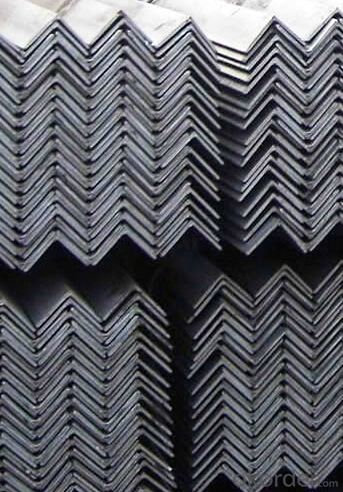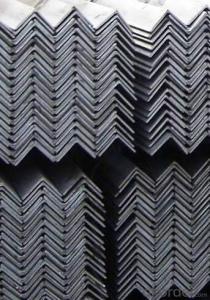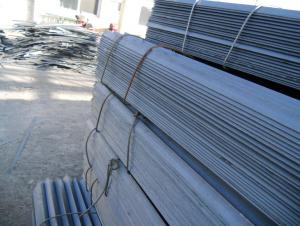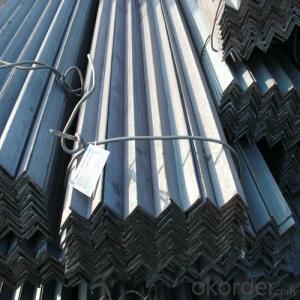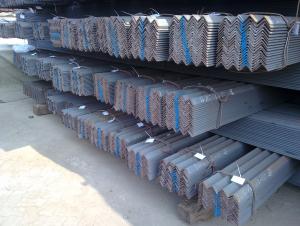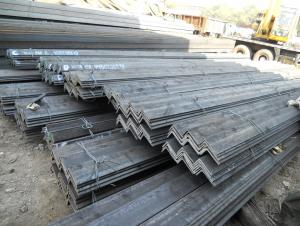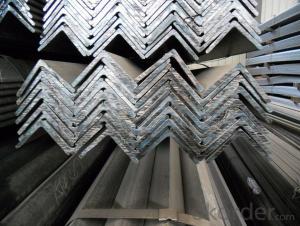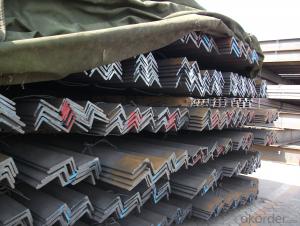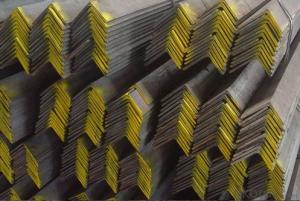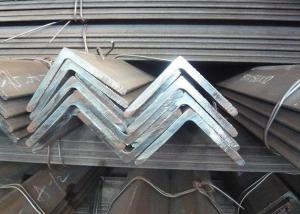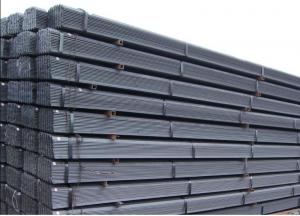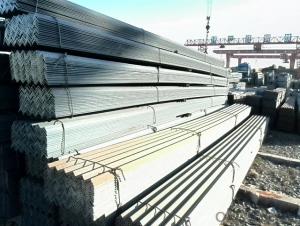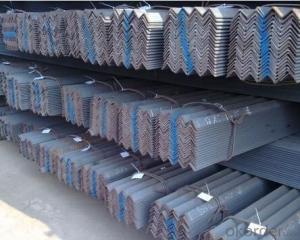Prime Low Carbon Steel Unequal Angle Bars JIS Standard
- Loading Port:
- Tianjin
- Payment Terms:
- TT or LC
- Min Order Qty:
- 100 m.t.
- Supply Capability:
- 20000 m.t./month
OKorder Service Pledge
OKorder Financial Service
You Might Also Like
OKorder is offering Prime Low Carbon Steel Unequal Angle Bars JIS Standard at great prices with worldwide shipping. Our supplier is a world-class manufacturer of steel, with our products utilized the world over. OKorder annually supplies products to African, South American and Asian markets. We provide quotations within 24 hours of receiving an inquiry and guarantee competitive prices.
Product Applications:
Prime Low Carbon Steel Unequal Angle Bars JIS Standard are ideal for structural applications and are widely used in the construction of buildings and bridges, and the manufacturing, petrochemical, and transportation industries
Product Advantages:
OKorder's Prime Low Carbon Steel Unequal Angle Bars JIS Standard are durable, strong, and wide variety of sizes.
Main Product Features:
· Premium quality
· Prompt delivery & seaworthy packing (30 days after receiving deposit)
· Can be recycled and reused
· Mill test certification
· Professional Service
· Competitive pricing
Product Specifications:
Manufacture: Hot rolled
Grade: Q195 – 235
Certificates: ISO, SGS, BV, CIQ
Length: 6m – 12m, as per customer request
Packaging: Export packing, nude packing, bundled
| UNEQUAL ANGLE STEEL | |||||
| size(mm) | a(mm) | a1(mm) | thickness(mm) | kg/m | length(m) |
| 75*50*5 | 75 | 50 | 5 | 4.808 | 6m,9m,12m |
| 75*50*6 | 75 | 50 | 6 | 5.699 | 6m,9m,12m |
| 75*50*8 | 75 | 50 | 8 | 7.431 | 6m,9m,12m |
| 100*75*7 | 100 | 75 | 7 | 9.34 | 6m,9m,12m |
| 100*75*8 | 100 | 75 | 8 | 10.6 | 6m,9m,12m |
| 100*75*9 | 100 | 75 | 9 | 11.8 | 6m,9m,12m |
| 100*75*10 | 100 | 75 | 10 | 13 | 6m,9m,12m |
| 100*75*12 | 100 | 75 | 12 | 15.4 | 6m,9m,12m |
| 125*75*7 | 125 | 75 | 7 | 10.7 | 6m,9m,12m |
| 125*75*8 | 125 | 75 | 8 | 12.2 | 6m,9m,12m |
| 125*75*9 | 125 | 75 | 9 | 13.6 | 6m,9m,12m |
| 125*75*10 | 125 | 75 | 10 | 15 | 6m,9m,12m |
| 125*75*12 | 125 | 75 | 12 | 17.8 | 6m,9m,12m |
| 150*90*8 | 150 | 90 | 8 | 14.7 | 6m,9m,12m |
| 150*90*9 | 150 | 90 | 9 | 16.4 | 6m,9m,12m |
| 150*90*10 | 150 | 90 | 10 | 18.2 | 6m,9m,12m |
| 150*90*12 | 150 | 90 | 12 | 21.6 | 6m,9m,12m |
| 200*100*10 | 200 | 100 | 10 | 23 | 6m,9m,12m |
| 200*100*12 | 200 | 100 | 12 | 27.62 | 6m,9m,12m |
| 200*100*15 | 200 | 100 | 15 | 34.04 | 6m,9m,12m |
FAQ:
Q1: How soon can we receive the product after purchase?
A1: Within three days of placing an order, we will arrange production. The normal sizes with the normal grade can be produced within one month. The specific shipping date is dependent upon international and government factors, the delivery to international main port about 45-60days.
Q2: How many tons of steel products could be loaded in containers?
A2: Usually the steel products are delivered by bulk vessel because of the large quantity and the freight. However, there are no bulk vessel enter some seaports so that we have to deliver the cargo by containers. The 6m steel product can be loaded in 20FT container, but the quantity is changed according to the size, usually from 18tons to 25tons.
Q3: what is the difference between actual weight and theoretical weight?
A3: All the section steel has two weights: actual weight and theoretical weight. Actual weight is the weighing out when the product delivered from the mill. Theoretical weight is calculated by pieces. The invoice can be based on each of them as your request.
Images:
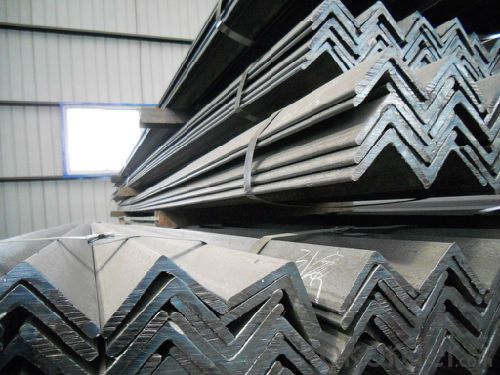
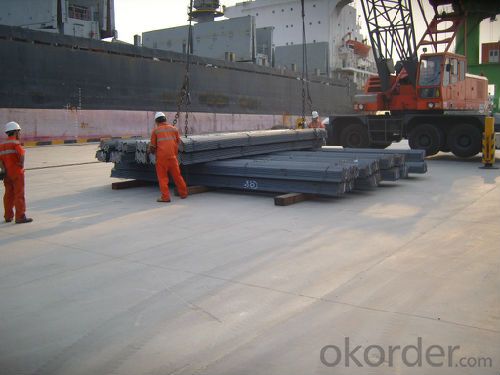
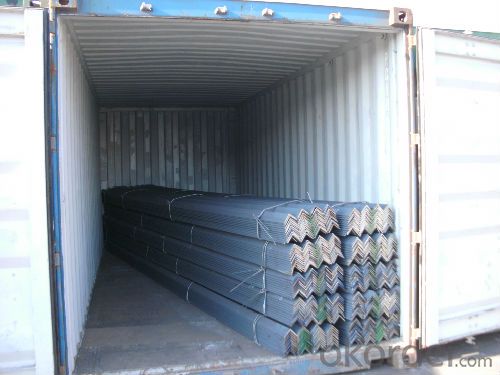
- Q: What are the different types of steel angles used in engineering?
- In engineering, there are several different types of steel angles that are commonly used. These angles are typically made from hot-rolled steel and are available in various sizes and dimensions to suit different applications. Some of the different types of steel angles used in engineering include: 1. Equal angles: These angles have equal sides and are commonly used for structural purposes, such as supporting beams or columns. They provide stability and strength to the structure and are often used in construction projects. 2. Unequal angles: As the name suggests, unequal angles have different length sides. These angles are often used in applications where one side needs to be longer or shorter than the other, such as bracing or framing. 3. L-shaped angles: L-shaped angles have one side longer than the other, forming an L-shape. These angles are commonly used in construction to provide support and reinforcement, such as for corners, joints, or connections. 4. Structural angles: Structural angles are specifically designed to bear heavy loads and provide structural stability. They are commonly used in building frame structures, bridges, or other load-bearing applications. 5. Stainless steel angles: Stainless steel angles are made from stainless steel, which offers excellent corrosion resistance and durability. These angles are often used in environments where rust or corrosion may be a concern, such as marine applications or food processing facilities. 6. Galvanized steel angles: Galvanized steel angles are coated with a layer of zinc to provide corrosion resistance. These angles are commonly used in outdoor applications or environments where exposure to moisture or harsh conditions is expected. 7. Perforated steel angles: Perforated steel angles have holes or perforations along their length, allowing for improved ventilation or drainage. These angles are often used in applications where airflow or water drainage is required, such as in HVAC systems or outdoor structures. Overall, the choice of steel angle depends on the specific requirements of the engineering project. Factors such as load-bearing capacity, resistance to corrosion, and aesthetic considerations play a crucial role in selecting the appropriate type of steel angle for a particular application.
- Q: What are the common thicknesses of steel angles?
- The common thicknesses of steel angles vary depending on the specific application and industry requirements. However, some commonly used thicknesses for steel angles include 1/8 inch, 3/16 inch, 1/4 inch, 3/8 inch, and 1/2 inch. These thicknesses are often used in construction, manufacturing, and structural applications. It is important to note that thicker steel angles provide increased strength and durability, while thinner angles are suitable for lighter applications. The choice of thickness ultimately depends on the specific load-bearing requirements and structural design considerations.
- Q: What are the cost considerations for using steel angles?
- The cost considerations for using steel angles primarily include the price of the raw material itself, transportation costs, and any additional processing or fabrication expenses. Other factors to consider are the required quantity, size, and complexity of the angles, as these can impact the overall cost. Additionally, market demand, availability, and fluctuations in steel prices can influence the cost of using steel angles. It is also important to account for any potential maintenance or corrosion protection expenses over the lifespan of the steel angles.
- Q: Can steel angles be used for signposts?
- Yes, steel angles can be used for signposts. Steel angles are commonly used in a variety of structural applications, including signposts. They are strong, durable, and provide excellent support for signs. Steel angles can be easily welded or bolted together to form a sturdy and reliable signpost. Additionally, steel angles are resistant to weather and can withstand harsh environmental conditions, making them suitable for outdoor use. Overall, steel angles are a popular choice for signposts due to their strength, durability, and versatility.
- Q: Can steel angles be used in conveyor belt supports?
- Indeed, the utilization of steel angles is viable for the support of conveyor belts. Given their robustness and long-lasting qualities, steel angles hold a significant position as structural supports across numerous applications. Their exceptional ability to bear heavy loads renders them suitable for accommodating conveyor belts. By employing steel angles, one can establish a solid framework or structure that ensures the conveyor belt remains stationary while facilitating its smooth movement. Moreover, the convenience of fastening or welding steel angles together ensures a secure and stable support system for conveyor belts.
- Q: What is the maximum length for a curved steel angle?
- The maximum length for a curved steel angle can vary depending on various factors such as the thickness of the steel, the degree of curvature, and the specific application requirements. It is best to consult with a structural engineer or steel fabrication expert to determine the appropriate maximum length for a curved steel angle in a particular situation.
- Q: Can steel angles be used in machine frames?
- Yes, steel angles can be used in machine frames. Steel angles are commonly used in construction and engineering projects due to their strength and durability. They can provide structural support and stability to machine frames, ensuring their stability and resistance to loads and vibrations. Steel angles can be welded or bolted together to form rigid and stable frames, making them an ideal choice for machine frames that require high strength and stability. Additionally, steel angles are readily available in various sizes and thicknesses, allowing for flexibility in design and customization of machine frames to meet specific requirements.
- Q: Are steel angles suitable for earthquake-prone areas?
- Yes, steel angles are suitable for earthquake-prone areas. Steel is a strong and durable material that can withstand seismic forces and provide structural stability during earthquakes. The use of steel angles helps distribute the load and reinforce the structure, making it more resistant to seismic activity.
- Q: Can galvanized square tubes and angle iron be welded together?
- Yes, if the requirement is not high, it can be welded directly. If the requirement is high, the zinc coating on the galvanized square pipe can be polished off before welding, and then welded. However, two kinds of welding methods, welding well, must be carried out at the weld corrosion. Now there is a special coating for hot-dip galvanizing on the market. It is characterized by high zinc content and 96% zinc content. It can provide similar anticorrosive effect to hot-dip galvanizing for repairing parts.
- Q: What is the maximum thickness of a steel angle?
- The maximum thickness of a steel angle can vary depending on the specific dimensions and specifications of the angle, but it is generally available in thicknesses ranging from 1/8 inch to 1 inch or even thicker.
Send your message to us
Prime Low Carbon Steel Unequal Angle Bars JIS Standard
- Loading Port:
- Tianjin
- Payment Terms:
- TT or LC
- Min Order Qty:
- 100 m.t.
- Supply Capability:
- 20000 m.t./month
OKorder Service Pledge
OKorder Financial Service
Similar products
Hot products
Hot Searches
Related keywords

